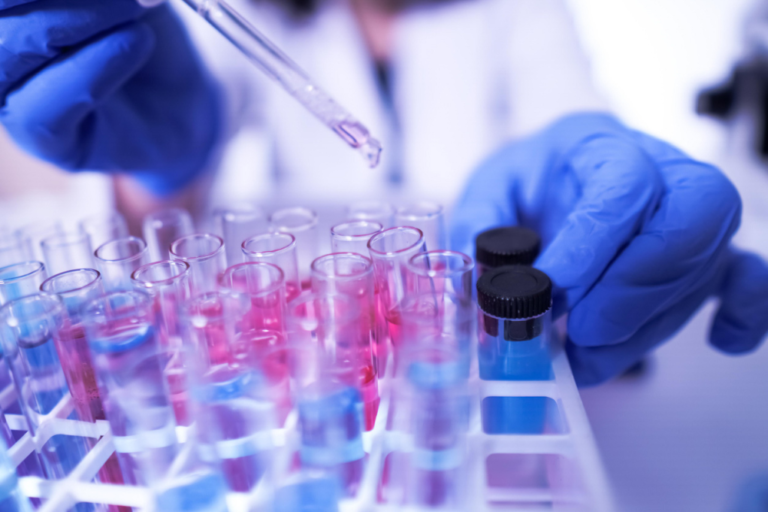Unlike many other states across America that struggled to get enough diagnostic tests for coronavirus 2019 disease (COVID-19) this past spring, New Mexico was able to not only meet the demand for testing symptomatic patients, but was able to begin expanding its screening to asymptomatic individuals. How did this largely rural and relatively low-income state—among the bottom five states in population density [1] and median income per capita [2]—stay on top of testing when larger and wealthier states fell behind? The answer lies in both centralization and diversification.
Built for success
Instead of separate county and city health departments, New Mexico has a centralized public health structure in its overarching Department of Health, and that helped speed a coordinated, statewide response, according to Steve Jenison, M.D., acting deputy secretary of the department. A primary player in that response was the department’s Scientific Laboratory Division, which already had in place a long-standing relationship with the private medical-testing company TriCore Reference Laboratories. TriCore employs about 1400 staff, who run lab testing for hospitals, clinics, and doctors’ offices throughout the state. “Because of this relationship between the public health lab and TriCore, they were able to get together early on and strategize about how best to expand COVID-19 testing,” he said.

Those open and consistent lines of communication between TriCore, the New Mexico Department of Health, and its state public lab helped ready the state for anticipated large-scale testing, agreed Karissa Culbreath, Ph.D., scientific director of infectious disease, research, and development at TriCore (Figure 1). “When COVID-19 came to be, we just continued to use and to optimize our established relationships. The state laboratory was initially performing the tests back when we didn’t yet have any cases in New Mexico, and we at TriCore were doing test validation and development, so as soon as cases were identified here in the state, we were on a parallel track and ready to go live,” she said.
Four is better than one
Part of that test preparedness involved thinking about possible bottlenecks, and two immediately came to mind. “First, I didn’t think one manufacturer was going to be able to provide us with all of the reagents that we needed to be able to test every single person,” Culbreath said. Second, tests are processed on large, complex machines that could potentially break down or require maintenance. Either scenario meant that testing would grind to a halt, and she said, “I knew I could not have a day go by when we were not performing testing.”
TriCore’s remedy was to broaden the state’s testing portfolio beyond the Centers for Disease Control and Prevention (CDC) assay that was initially deployed by the Scientific Laboratory Division and TriCore. After doing all of the necessary validation work, it was able to add four diagnostic reverse-transcription polymerase chain reaction (RT-PCR) tests: the U.S. Centers for Disease Control and Prevention’s (CDC’s) 2019-nCoV Real-Time RT-PCR Diagnostic Panel, Abbott m-2000, Diasorin MDx, and Roche Cobas 6800.
The multiple-test approach worked like a charm, Culbreath said, noting that it was able to more than triple the capacity for testing in just a few weeks. As a result, the state was able to consistently offer both high-throughput diagnostic testing to meet high demand, as well as more rapid diagnostics for hospitalized patients and prioritized patients who needed results quickly.
Diversifying further
The New Mexico Department of Health went even further to assure testing availability by signing contracts with other labs, including the National Jewish Health Laboratory in Denver, CO, and Sandia National Laboratory in Albuquerque, to assist if needed; and adding new diagnostic testing equipment to boost statewide testing capacity, Jenison said.
Testing in the state also broadened. The Department of Health initially placed its focus on those individuals recommended by the CDC: people who were symptomatic, people who were known contacts of people who have been diagnosed, and people with suspicious travel histories. At the request of Gov. Michelle Lujan Grisham, the department also expanded testing to include asymptomatic individuals, particularly essential workers, such as health care, grocery-store, and public-utility workers, who had unavoidable interactions with the public, Jenison said. In addition, as of mid-April, the Department of Health and area hospitals began a joint effort to offer drive-up RT-PCR testing of the general public to determine what percentage of the overall population is infected with the virus—whether they had symptoms or not—and began considering adding serologic antibody testing to the mix as a way to learn what proportion of the general public has been infected since the outbreak began.
Throughout New Mexico’s response this past spring, the centralized public-health structure and its diversified approach served the state’s residents well, agreed both Jenison and Culbreath. Back in April, Culbreath remarked, “Over the past several weeks, we have consistently been in the top ten, and for a while, we were the top two or three in terms of testing per capita, and it’s really because of the centralized laboratory model that we have, the amazing scientific knowledge here at the core TriCore laboratory facility and in the state.” She added, “I do think it is a great model for how laboratory services can be offered within regions, and I think it’s serving us well in the midst of this pandemic.”
References
- Statista.com, “Population density in the U.S. by federal states including the District of Columbia in 2019.” Accessed: Apr. 22, 2020. [Online]. Available: https://www.statista.com/statistics/183588/population-density-in-the-federal-states-of-the-us/
- G. G. Guzman, U.S. Census Bureau, “Household income: 2018,” Rep. No. ACSBR/18-01, Sep. 2019. Accessed: Apr. 22, 2020. [Online]. Available: https://www.census.gov/library/publications/2019/acs/acsbr18-01.html



